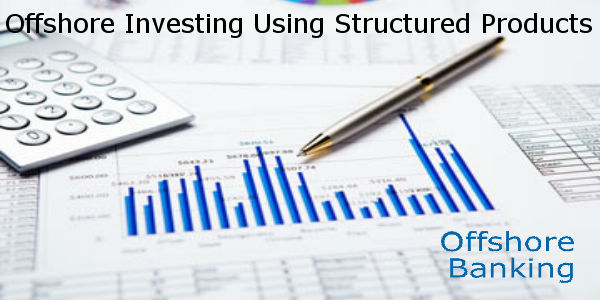
In an earlier post, we looked at how offshore banks offer investment solutions for the needs of high networth clients like you. Here, we will delve into the depths of high finance / financial engineering and look at how structured products can help you with your investment needs:
What are structured products?
Structured products are fixed-term investments whose payout depends upon the perform of an underlying benchmark such as interest rates, equity markets, commodities, corporate credits or foreign exchange markets. Structured products provide you with the potential to earn higher returns than are offered by conventional banking products.
What kind of capital protection is available with structured products?
Full protection – Or, 100% capital protection. This means that the minimum that you receive on maturity should be at least equal to the amount originally invested.
Partial protection – How much of your original investment you get back depends upon the performance of the underlying benchmark and only a proportion, say 70% is protected by the capital guarantee.
What are the main structured products available?
Structured deposits combine a deposit with an investment product. The return on a structured deposit depends on the performance of the underlying benchmark or asset. Structured deposits may provide higher returns when compared to traditional fixed deposits but you take on more risks when you buy a structured deposit, including the risk that you receive returns that are lower than expected. At maturity you will receive the principal amount of the structured deposit; but, if the deposit is withdrawn early, you may not receive 100% of the money invested back.
Foreign exchange linked structured deposits are short-term deposits that can meet your foreign currency needs while potentially offering higher interest rates than traditional fixed deposits. They can take the following forms:
Dual currency deposits – They can provide you with potentially enhanced returns in one currency in return for accepting possible repayments of the deposit principal plus interest in another currency. They may come with a “Knock-out” that remove the risk of conversion when the specified knock-out level is touched or breached. Or, they may feature a “knock-in”; in such a case, they become active only when the specified “knock-in” level is touched or breached.
Range deposits – They allow you to take a view on the future movement of a foreign exchange rate to earn a potentially higher return. This higher return is derived from the higher risks associated with exposure to foreign exchange.
Structured notes are investments whose return is linked to the performance of one or more underlying asset(s) or benchmark(s). Underlying assets or benchmarks could include market indices, equities, interest rates, fixed-income products, foreign exchange rates or any combination of these.
It may be the interest amount and/or principal repayment, which are linked to the performance of the underlying instrument. Structured notes differ from structured deposits in that you will receive the principal amount on maturity of the structured deposits while you potentially stand to lose the whole principal sum when investing in structured notes.
► Your offshore bank may be able to advise you as to the level of capital protection that you may structure with the choice of your structured instrument.
Structured products – questions to ask
Before you make a decision on using structured products in your portfolio, you could consider asking your relationship manager / portfolio manager the following questions:
▪ What are the features of this structured product?
▪ What are risks associated with this structured product?
▪ What are the expected returns on this product?
▪ How does this product fit my investment needs given my risk profile?
▪ How much fees would the offshore bank earn on selling me this product?
▪ How can I exit this structured product and what should I expect when exiting?
